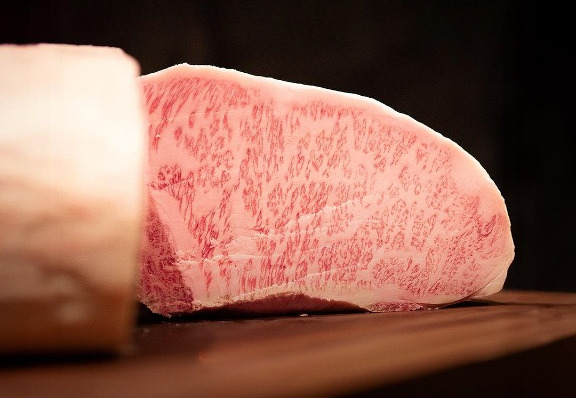Hot Dogs: A Deep Dive into its Origin and Global Recipes
 by
Leo Bisma
by
Leo Bisma  July 05, 2023
July 05, 2023
Step into a mouth-watering journey as we delve into the intriguing origin of hot dogs and explore an array of scrumptious recipes. Discover how this humble sausage-in-a-bun transitioned from European streets to become an iconic staple of American cuisine.

Welcome to another delicious edition of the Meatguy Steakhouse blog, where we explore everything related to the sumptuous world of meat cuisine. Today, we are shedding light on a favorite, classic, and arguably iconic delicacy that has warmed the hearts and satisfied the palates of many: the hot dog.
It's a delight that's rich in history, as well as flavor, and has found its way to almost every part of the globe. So, let's dive in, shall we?
The Origin of the Hot Dog
Despite being an emblem of American culture, the hot dog traces its roots back to Europe. Its story starts in the bustling alleys of Germany, from the German sausage, or 'wurst.' But the question remains: what is the origin of the hot dog?
The German Connection
In the early 13th century, the city of Frankfurt celebrated the coronation of a new emperor, and, as legend has it, a local butcher created a new form of sausage to mark the occasion. This sausage was thin, long, and mildly spiced, resembling what we know today as the Frankfurt sausage or "frankfurter."
Journey to America
The frankfurter made its way to the United States in the 19th century, brought across the Atlantic by German immigrants. In cities like New York and Chicago, German immigrants set up pushcart businesses selling their 'wurst' in a bun, a convenient and delicious meal for the hardworking population.
The Birth of the American Hot Dog
This leads us to the intriguing question: who invented hot dog food? Though it's hard to pinpoint the exact individual who first placed a frankfurter in a bun and named it a hot dog, many believe it was German-American Charles Feltman. In 1867, Feltman, a baker, began selling frankfurters in a bun from his stand in Coney Island, New York.
This new dish quickly gained popularity. It was convenient, affordable, and tasty – perfect food for the hustle and bustle of American city life. Feltman's hot dog stand quickly grew into a massive restaurant selling thousands of these delicious sausage sandwiches every day.
And so, the humble sausage took on a new identity in the United States, transforming from a simple 'wurst' to an iconic 'hot dog.' The name 'hot dog' has a few theories, one of which suggests that it was a cheeky comment on the unknown meat content in the early versions of the dish, drawing parallels with a dachshund dog, which is short and long just like a frankfurter.
Read more: T-Bone Steak: How to Cook and Serve this Iconic Cut of Beef
The Composition of the Original Hot Dog
With a better understanding of the hot dog's historical journey, let's now delve into its culinary makeup. What was the original hot dog made of? Though seemingly simple, a hot dog's composition is a fine blend of elements that bring together a symphony of flavors in every bite.
The Sausage
At the core of every hot dog is the sausage or frankfurter. In its inception, the frankfurter was primarily made from beef or veal.
German butchers employed a blend of finely chopped lean meat, combined with fat, salt, pepper, and occasionally, garlic. The mixture was then encased in animal intestines, which would give the sausage its characteristic shape.
Traditionally, the sausages were boiled at a temperature of 75-80 degrees Celsius until they reached a safe internal temperature of 68 degrees Celsius. Then, they were cooled and often smoked to give an extra layer of flavor.
The Bun
An equally essential element of the hot dog is the bun. The original hot dog bun, as introduced by Charles Feltman, was a fresh, soft roll, long enough to hold the sausage and robust enough to not disintegrate under the weight and moisture of the frankfurter and its accompaniments.
The Toppings
While the original hot dog was a fairly simple combination of a frankfurter in a bun, toppings played a crucial role in enhancing the overall flavor. Common toppings included:
Mustard: A dollop of sharp, tangy mustard contrasted beautifully with the rich, smoky sausage.
Onions: Finely chopped onions added a crunch and a bit of heat to each bite.
Sauerkraut: This tangy, fermented cabbage is a traditional German accompaniment and a nod to the hot dog's roots.
Pickles: Pickles brought a tart, sweet contrast to the savory sausage.
Please note, the hot dog's charm lies in its versatility. It's a culinary canvas that embraces regional and personal preferences. Whether it's a classic recipe or an innovative twist, it welcomes them all, further enhancing its popularity and reach.
In our next section, we will look at why the hot dog, with its European origin, came to be so deeply embedded in American culture. Stay tuned as we continue this tasty exploration of a timeless classic!
Read more: Sausage 101: Understanding Types and Their Preparation
The American Love for Hot Dogs
From the sizzling barbecue grills on the Fourth of July to the stands at baseball games, the hot dog has undoubtedly become a staple in American culture. So, why are hot dogs considered such an iconic American food, and why are they called hot dogs?
The American Embrace
Hot dogs were a perfect fit for the bustling life of American cities in the late 19th and early 20th centuries. They were affordable, easy to produce in large quantities, and could be eaten on the go - no cutlery required. This made them popular among the working class, who needed quick, convenient, and filling meals.
Another contributing factor to the hot dog's American success was the rise of leisure activities and sporting events, where food vendors recognized the appeal of portable and easy-to-eat meals. Hot dogs soon became a favorite snack at baseball games, an association that remains strong to this day.
Regional Variations
The hot dog's adaptability to regional tastes further solidified its place in American culture. Over time, cities across the country began adding their unique spin to the classic hot dog:
In Chicago, the hot dog was "dragged through the garden," topped with a colorful array of mustard, onion, sweet pickle relish, a dill pickle spear, tomato slices, sport peppers, and a dash of celery salt - all in a poppy seed bun.
Meanwhile, in New York City, hot dogs were commonly served with sauerkraut and a generous drizzle of spicy brown mustard.
A Curious Name: The 'Hot Dog'
Now, on to our next question: why is it called a hot dog? The term 'hot dog' is believed to have originated from a popular joke about the questionable contents of the sausages. In the 19th century, it was a common joke that sausages could contain dog meat.
This led to the popular cartoon by Thomas Aloysius "Tad" Dorgan, a newspaper cartoonist, who depicted a dachshund sausage in a bun at a baseball game, calling it a 'hot dog' because of its resemblance to the dachshund breed. Although the original cartoon hasn't been located, Dorgan's other work shows he commonly referred to the sausages as 'dogs,' and this is likely how the term came into popular use.
And so, while the hot dog may have had its humble beginnings in Germany, it found its true home in the heart of America. It morphed from the simple 'wurst' to a symbol of American culture and regional pride, truly earning its title as an iconic American food.
Read more: The Ultimate Guide to Choosing the Perfect Steakhouse for Your Next Night Out
Hot Dog Recipes
To truly appreciate the universal appeal of hot dogs, one must delve into the multitude of ways they can be prepared.
In this section, we'll explore an array of hot dog recipes that cater to diverse taste buds. From the classic American style to an Asian fusion variant, let's dig in!
1. The Classic American Hot Dog
While there are many regional variations, here is a simple and classic American hot dog recipe:
Ingredients:
Beef or chicken frankfurters (1 per hot dog)
Hot dog buns (1 per hot dog)
Yellow mustard
Finely chopped onions
Sweet pickle relish
Instructions:
Boil the frankfurters in water heated to 75-80 degrees Celsius until they reach an internal temperature of 68 degrees Celsius.
Warm the hot dog buns in the oven or on a grill.
Place the cooked frankfurter in the bun.
Top with a squirt of yellow mustard, a sprinkling of finely chopped onions, and a spoonful of sweet pickle relish.
2. Asian Fusion Hot Dog
Bring an Asian flair to your hot dog with this easy recipe:
Ingredients:
Beef or chicken frankfurters (1 per hot dog)
Hot dog buns (1 per hot dog)
Teriyaki sauce
Wasabi mayo
Seaweed flakes
Instructions:
Boil the frankfurters as per the previous recipe.
Toast the hot dog buns.
Place the cooked frankfurter in the bun.
Drizzle with teriyaki sauce and wasabi mayo.
Sprinkle with seaweed flakes for a unique umami touch.
3. Western-Style Hot Dog
Give your hot dog a hearty, Western twist with this recipe:
Ingredients:
Beef or chicken frankfurters (1 per hot dog)
Hot dog buns (1 per hot dog)
Barbecue sauce
Shredded cheddar cheese
Crispy fried onions
Instructions:
Cook the frankfurters as per the first recipe.
Toast the hot dog buns.
Place the cooked frankfurter in the bun.
Top with a generous amount of barbecue sauce and shredded cheddar cheese.
Finish with a handful of crispy fried onions for a delicious crunch.
These recipes illustrate the versatility of the humble hot dog and its ability to blend with different culinary cultures. Whether it's a traditional style or an innovative fusion, there's a hot dog recipe to suit every palate.
Enjoy experimenting with these recipes and creating your unique hot dog experience.
As we reach the end of our delicious journey, it's clear that the hot dog is more than just a simple meal; it's a symbol of American ingenuity and a testament to the country's multicultural heritage.
From its humble beginnings in European sausage-making traditions, the hot dog has woven itself into the very fabric of American society. Its myriad of regional variations showcases the diversity and adaptability of this beloved culinary icon.
As we continue to celebrate the rich heritage and culinary wonders of meat, we invite you to join us at Meatguy Steakhouse for a taste of tradition and innovation.
Experience the blend of flavors, the welcoming ambiance, and the joy of a meal shared with loved ones. If you're not ready to step out just yet, put on your chef's hat and re-create these delightful dishes in the comfort of your home.
Here at Meatguy Steakhouse, we believe that good food forms the basis of happy memories. So, let's continue to create those unforgettable moments, one meal at a time. Thank you for joining us on this gastronomic journey, and stay tuned for more meaty tales and savory recipes!










